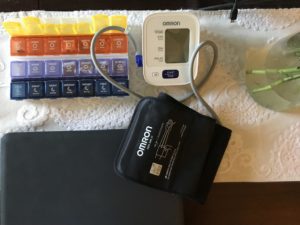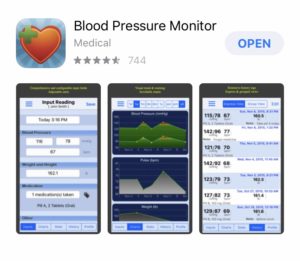You must accurately measure your blood pressure to prevent a hypertension crisis. Accurately measuring your blood pressure is the most important thing to do to prevent and treat hypertension. As you know, office blood pressure measurement is the gold standard for monitoring resistant hypertension. Surprisingly, office measurements by your health care provide are not your true blood pressure.

In fact, research has shown that home blood pressure monitoring is the most accurate representation of your true blood pressure. If you use a home monitor, you can partner with your health care provider to control your blood pressure. Do you know how to accurately measure your blood pressure? Hence, you will know your true blood pressure numbers if you do.

In this post, I will give you several important tips to accurately measure your blood pressure at home. I will tell you what to do with the measurements WHEN you monitor your blood pressure. You will be instructed on how to confirm your measurement to assure you are capturing your true blood pressure. You will also learn what actions to take with measurements of 140/90 mmHG or greater.
How To Get An Accurate Blood Pressure?
Gather your automatic arm cuff home blood pressure monitor and your electronic or paper log. I recommend the Omron 3 Series automatic blood pressure monitor. SEE BELOW FOR THE LINK TO PURCHASE FROM AMAZON, but you can purchase this monitor from any drug store.
- Sit at a table with either arm extended and rested on the table positioning your palm facing towards the sky.
- Place the arm cuff around your arm above your elbow, but below your shoulder of your upper arm.
- The cuff should be at lease 1/2 of an inch from the bend of your arm. The cuff tubing should be in the middle of your arm towards the base of the blood pressure monitor.
- Relax with your back resting on the chair, feet flat on the floor, and press the start button. Don’t move.
Initially measure your blood pressure in your right and left arms. Research has shown that either arm could be used to accurately measure your blood pressure. However, if there is a blood pressure difference of 10 points or more between your left and right arms, always use the arm with the higher reading. This will give you your true blood pressure measurement and your most accurate measurement.
How Often To Measure?
It is a good practice to measure your blood pressure routinely twice a day, in the morning and in the evening. Do this until your blood pressure is controlled at your target goal.
Once your blood pressure is at your target goal, you can decrease the frequency in monitoring base upon your health care provider’s recommendation. However, I recommend daily or every other day monitoring for the best blood pressure management.
Twice a day monitoring at least seven days prior to your office visit will give your health care provider adequate information to determine if your medication is optimal. So be sure you do your homework and GET A MORNING AND EVENING MEASUREMENT FOR SEVEN DAYS PRIOR TO YOUR OFFICE VISIT.
What Actions To Take If Your Blood Pressure Is High?
You should also take your blood pressure if you are not feeling well. Remember that it is important to TAKE ACTION on severe blood pressure measurements.
You can call your health care provider at any time you have elevated blood pressure levels. There should be someone on call after hours to give you guidance. If YOUR BLOOD PRESSURE IS SEVERE, you need to seek emergency help. It is important to know the symptoms of stroke, heart attack.
What Actions To Take If Your Blood Pressure Is Low?
It is also important to let your health care provider know if your blood pressure is too low. This is important because your medication might need to be decreased if your blood pressure is too low. This might cause you to feel dizzy, lightheartedness or weak. YOUR BLOOD PRESSURE MIGHT BE TOO LOW IF YOUR TOP NUMBER (SYSTOLIC) IS LESS THAN 100 OR YOUR BOTTOM NUMBER IS LESS THAN 60. It is important to ask your health care provider what is considered low for you.
What To Do With Your Measurements?
It is important to monitor your blood pressure. However, it is also important to keep track of your measurements in a tablet or log to share with your health care provider.
If you have a smart phone, the best way to keep track of your blood pressure measurements is in a FREE app that you can download from the App Store. The one I use is called BP Monitor, but any one of the blood pressure apps would do the job.
I recommend the blood pressure log app rather than logging your measurements on paper for ease. Your health care provider will appreciate the ease of viewing your blood pressure measurements on a chart that is provided in most apps. Further, you will appreciate the ease of logging your blood pressure measurements and your log will be easily accessible at your office visit. No more forgetting your log at home since you will likely have your cell phone nearby.

Stay tuned for the completion of this post that will cover the areas below:
Confirm Your True Blood Pressure
How To Partner With Your Provider